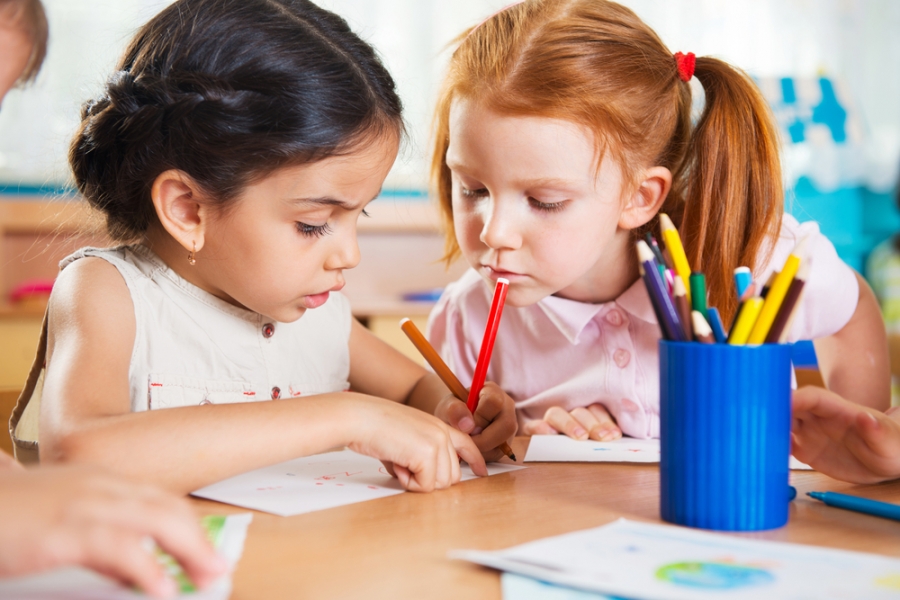Emotional intelligence is critical to success in school and life
Reading. Writing. ‘Rithmatic. These “three R’s” of education have been embraced as the pillars of education programs around the world. Often overlooked, however, is the necessity for a strong foundation of social-emotional learning that supports a child as he or she works work to excel academically. As a child’s emotional intelligence develops, so do skills including making responsible decisions, self-management, and building relationships. From that foundation, the child can achieve success in school, future careers, and in life.
Emotional intelligence is the ability to recognize, manage and understand our own emotions and the emotions of others. In recent years, several organizations have developed research- based best practices for teachers who want to implement social-emotional learning in their classroom. These organizations include the RULER program from the Yale Center for Emotional Intelligence, the Responsive Classroom approach developed by the Center for Responsive Schools, and the Kimochi’s Educators Toolkit.
In my years in classrooms, I have incorporated a variety of ideas from those organizations that help my students develop emotional intelligence. One component of social-emotional learning is helping students understand the importance of functioning as members of a community. Creating a class charter is one idea from the RULER program that can help lead to this sense of community. The charter is a document that is created by the students and the teacher that outlines how the students and the teacher want to treat each other, how they want to feel at school, and what they will do to help achieve these desired feelings. My students last year, for example, said they wanted to feel “proud” and “loved” then came up with a list of ways they could help each other feel that way. After the charter is completed, everyone signs it. That way everyone, including the teacher, is accountable. Naming specific feelings and the actions that will lead to those feelings helps students develop the self- awareness needed to recognize how actions and feelings are connected. The charter can be referenced throughout the year to remind students that we are a classroom community working together.
Another strategy to build a sense of community and help with communication skills is setting aside time each day for a community meeting. During the community meeting, students should practice greeting each other, share information about an important part of their life, and possibly participate in a short activity designed to practice social and academic skills. Dedicating time for students to share with each other helps develop a sense of belonging as well as improve their speaking and listening skills. Community meetings also are a great time to review the charter.
Self-management is another emotional intelligence skill that can be developed in the classroom. In my classroom, I have a clip chart that helps students monitor individual behavior. Every student has a clip with their name on it. Students move their clips up and down the chart based on the choices they make. Having this clip chart visible to students helps them monitor their choices throughout the day. I also use Class Dojo, which is an app where teachers can give or take away points for specific actions or traits, such as “responsibility” or “teamwork.” For example, a student could earn a point for “teamwork” by helping a peer with a problem they do not understand. Earning this point helps the student understand the positive impact of that choice and provides them with the satisfaction of being recognized for a positive behavior. No matter which system a teacher uses, it is important that the students understand the why behind any reward or consequence. Brief affirmations such as, “You are doing an excellent job reading quietly. This helps everyone focus on their reading,” help students understand how and why to choose actions that help them learn, stay safe, and respect others.
Another important aspect of emotional intelligence is personal responsibility. Children have to learn how to solve problems on their own instead of always relying on a teacher or adult. In my classroom, we use the 4B’s, which is an acronym that encourages students to use “Book, Brain, Board, or Buddy” before they ask a teacher for assistance. Parents can support personal responsibility at home by giving their child specific tasks, such as packing their own lunch, that they are expected to complete on their own. Ideally, students will develop intrinsic motivation, so the focus shouldn’t be on any reward they can earn. Instead, children should learn that they are responsible for completing certain tasks on their own without requiring reminders or assistance. For older students, student-led parent teacher conferences are a good opportunity for students to demonstrate their personal responsibility. By giving the responsibility of leading the conference to the student, students are empowered to take ownership over their goals and progress.
In my classroom, it is not enough for my students to simply learn academic content. I place a high premium on modeling ways for them to dig deeper, develop a passion for learning, and become good human beings. This can be a hefty task, but I believe that developing strong emotional intelligence in my students is a key factor to helping them achieve their goals.
BIO: Carolyn French is Grade 2 teacher with a B.A (Hons) BA from the University of Southern California and an M.A Elementary Education from the University of Missouri at the International School Saigon Pearl (ISSP)




